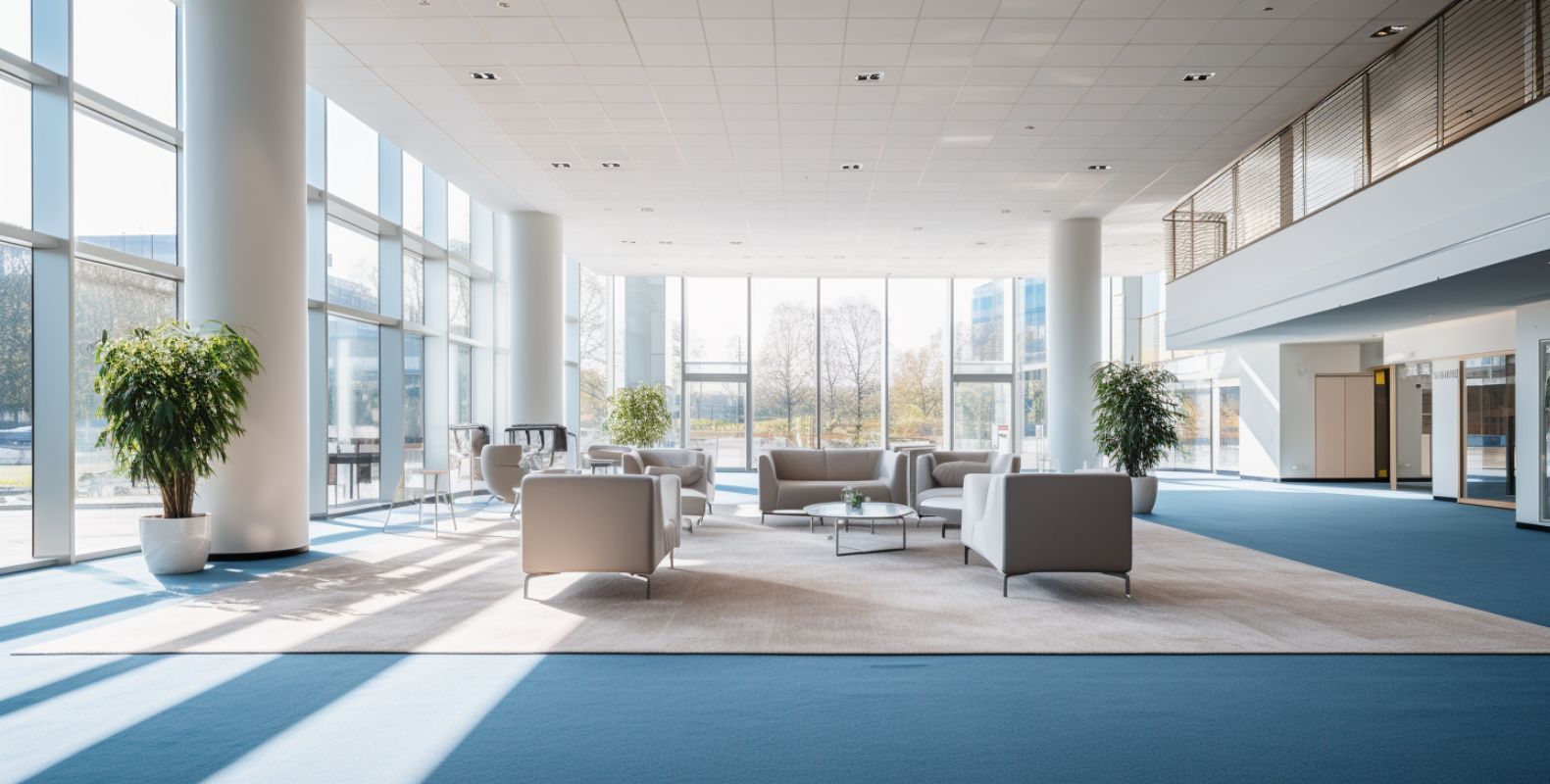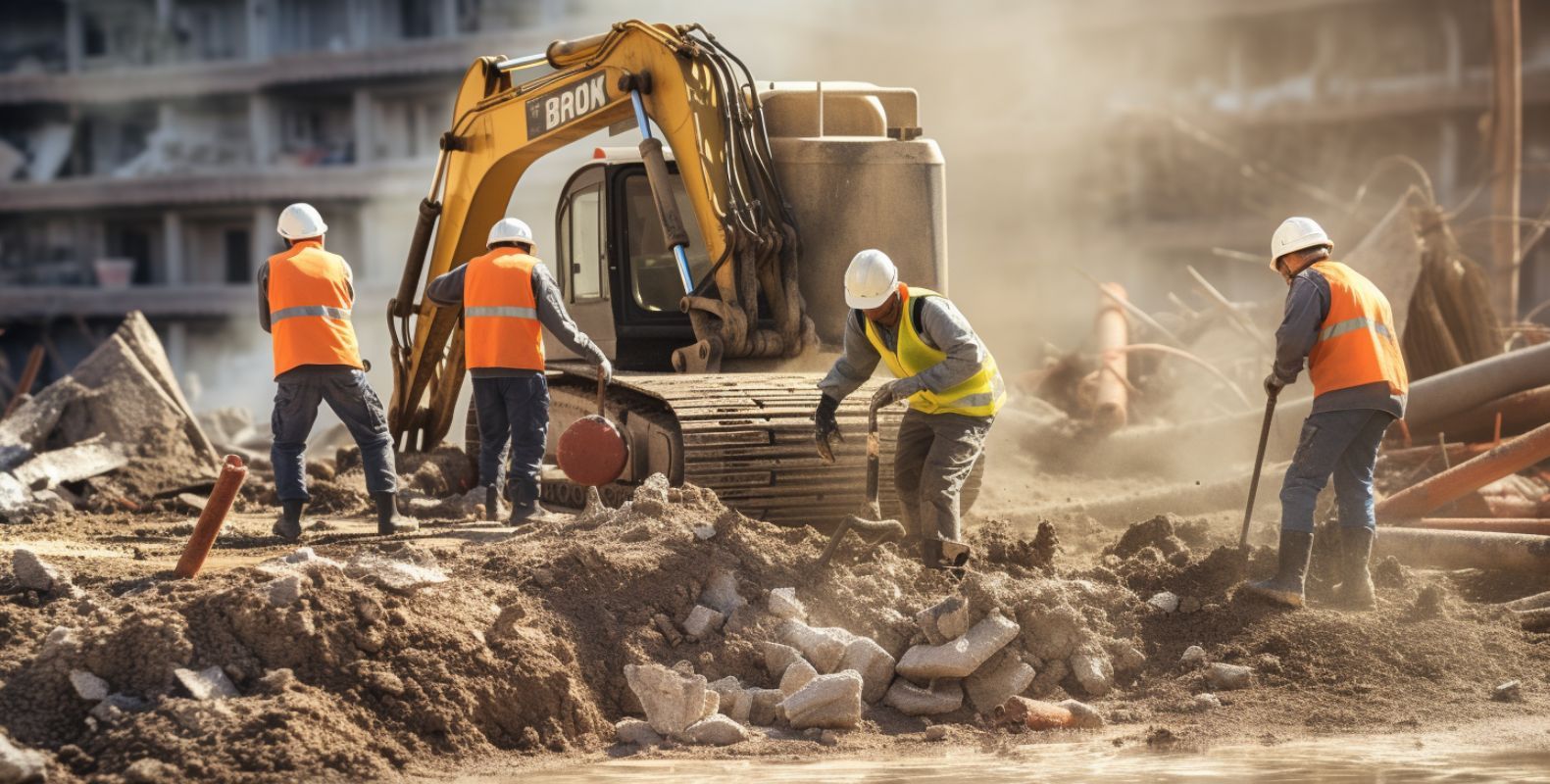Between Sets & Sanitizing: The Routine Every Gym Needs
Introducing the importance of professional sanitation cleanings and hygiene challenges specific to the Fall season in gym settings, as well as best cleaning practices for gym equipment and how to keep gym-goers safe via professional air quality and surface sanitation – these topics are essential in helping maintain a hygienically safe workout environment for all.
The Importance of Professional Sanitation Cleanings in Gym Settings
The importance of professional sanitation cleanings in gym settings is invaluable in maintaining a healthy environment for patrons and staff alike. Furthering the protection of those within gym settings requires frequent and thorough cleanings. Pollutants such as dust, sweat, and bacteria can accumulate quickly in the air, on surfaces, and on gym equipment, necessitating a timely removal by a trained team.
On the other hand, patrons and staff must also engage in good hygiene practices, such as washing hands and wiping down machines after use. However, these practices may not always be sufficient on their own for full protection. Professional sanitation cleanings are proven to help reduce the spread of contagious illnesses, as well as the growth of mold and fungi. Such cleanings can help make gyms safer and more secure for everyone and reduce the likelihood of health-related complications.
In addition, professional sanitation cleanings can ensure greater customer satisfaction. When patrons feel safe and trust the space they are in, they are more likely to return, generating more business and revenue. Cleanings enable gyms to avoid legal issues or liability claims arising from the spread of potentially serious health conditions. As a result, gym administrators should have a regular plan for professional sanitation cleanings to ensure hygiene standards are met.
Finally, professional sanitation cleanings should only be performed by certified cleaning companies. Regularly-scheduled sanitation cleanings should be undertaken by crews who are well-trained and experienced in the use of the latest products and cleaning equipment. Similarly, trained personnel should accurately document and maintain records of all cleanings and any other compliance requirements.
Therefore, it is evident that professional sanitation cleanings are essential for maintaining a safe and healthy gym atmosphere. Such cleanings can prove to be invaluable not only to the health of patrons and staff, but also to the success of the business. In contrast to more regular self-hygiene practices, professional sanitation cleanings are a necessary part of the maintenance process.
Fall-specific Hygiene Challenges in Gyms
Gym hygiene is a top priority all year round, but it is especially critical during the fall season. As temperatures drop outside, many of us turn to indoor fitness options to stay active and healthy. However, without carefully planned and implemented strategies, fall can also bring an increase in germs which can be detrimental to user health.
In addition, the onset of autumn marks the start of flu season, with many respiratory viruses and illnesses being passed around. Consequently, it is essential that gym managers take all the necessary steps to protect members by ensuring a clean and safe facility. Following are some of the best practices for ensuring hygiene in the gym during the fall:
First and foremost, gym users should practice proper handwashing techniques. While many gym goers may overlook this practice, it is important to wash hands thoroughly before and after each workout and to avoid touching their face or other items with their hands. Gym owners and managers should ensure that soap and paper towels are always available and the sinks and counters are cleaned and disinfected regularly.
Gym equipment must be frequently sanitized. Instead of using conventional cleaning methods, utilizing a product that is specifically designed for cleaning fitness gear is beneficial. In particular, gym equipment that provides direct contact with the hands and face should be disinfected more frequently.
Also, gym floors must be cleaned often and rugs and mats must be vacuumed or washed to remove dirt and bacteria. When people are sweaty or kick up dust on the floor, the risk of germs increases dramatically. As a result, gym owners should be sure to schedule regular deep cleanings of the floors and carpets.
Finally, instead of using air dryers, gym managers could encourage the use of paper towels when drying hands. Additionally, gym patrons should bring their own supplies like towels, water bottles, and gym bags to use during their workout. This way, the risk of sharing germs is minimized.
Overall, gym hygiene must remain a top priority during the fall season and beyond. With the appropriate measures in place, gym owners and users can work together to ensure a safe and healthy environment.
Best Cleaning Practices for Gym Equipment
Best cleaning practices for gym equipment will help ensure a healthy and safe environment for all gym-goers. Properly sanitizing and disinfecting equipment on a regular basis is the most effective way to limit the transfer of germs and other contaminants. When cleaning gym equipment, it is important to use the right products; look for EPA-registered disinfectants and always review and follow the manufacturer’s instructions. Begin by wiping down surfaces with a cleaning solution and a damp cloth, ensuring that dirt and debris are completely removed. Additionally, frequently-touched surfaces such as handles and other hand grips should be thoroughly cleaned and sanitized.
Be aware that certain surfaces may require additional cleaning steps. For instance, rubber mats should be cleaned with plain, warm water or mild, diluted cleaning solutions. Vinyl surfaces, on the other hand, need to be kept clean with a microfiber cloth and a spray cleaner; never use any type of abrasive cleaner as it could damage the material. Additionally, it is important to remember that gym equipment can be breeding grounds for bacteria, and that a gym cleaning routine should involve sanitizing machines and gear with antibacterial solutions often.
Consequently, it is important to dedicate regular time to cleaning and disinfecting gym equipment in order to prevent the spread of germs and bacteria, and to ensure the safety of the gym environment. Finally, it is recommended to use disposable cloths, wipes and other cleaning solutions to reduce the potential spread of contamination. With the proper best cleaning practices in place, it will make for a healthier and safer gym environment and help ensure a pleasant experience for all gym-goers.
Keeping Gym-goers Safe: Professional Air Quality and Surface Sanitation
The safety of gym-goers has become a heightened concern as the fitness industry experiences a long-awaited surge in public attendance. Gym managers need to ensure that patrons are protected from potential sources of airborne or surface contaminants that could increase their risk for infection or illness. To do so, professional air quality and surface sanitation should be implemented.
Clean and well-maintained air ducts are essential to minimize the emission of dust particles, allergens, and virus-carrying organisms and to promote better air quality. The air ducts should be routinely checked and maintained by professionals for optimal air quality. Similarly, high-quality filters should be installed near vents and registers to trap dust, dirt, and other air contaminants, which must also be changed on a regular basis.
On the other hand, surface sanitation is just as critical for gym-goers’ safety. Equipment such as treadmills, weight benches, ellipticals, and free weights should be sanitized after each individual’s use or, even better, between exercises to minimize accidental transmission of pathogens. Sanitizing products should be readily available to patrons onsite so they can clean the equipment immediately before or after use. Furthermore, common use areas such as locker rooms or restrooms should also be cleared of contaminants as often as possible to provide a sanitary environment.
In addition, surfaces should be disinfected before and after each patron’s entry to the facility by staff equipped with proper personal protective equipment (PPE) including masks, gloves, and face shields. This will help to minimize the spread of contaminants from person to person. Additionally, gym owners should ensure the use of touchless technology (e.g. foot-operated door openers) as much as possible to reduce the risk of infection further.
Gym managers should implement a comprehensive safety plan that encompasses both professional air quality and surface sanitation procedures as part of their commitment to providing clean and safe fitness facilities for their members. Professional air quality and surface sanitation must be continually monitored and serviced in order to promote a safe environment for gym-goers.
Key Takeaways
Professional sanitation is a crucial part of running a successful, safe gym. Sanitization cleanings should be performed regularly to reduce the amount of bacteria, viruses, and other contaminants that can cause illnesses and other illnesses-related issues. Fall-specific hygiene challenges create additional issues and offer the need for more frequent sanitization cleansings to prevent accumulation of dirt, dust, and other debris that can be hazardous. Utilizing the best cleaning practices, such as those that involve the use of disinfecting sprays, wiping down gym equipment after each use, and paying attention to areas that are hidden and often overlooked, can greatly contribute to providing a safe, secure gym environment for individuals. Furthermore, maintaining high air quality and surface sanitation plays an important role in keeping both gym-goers and the facility staff safe from the spread of illnesses.
Frequently Asked Questions
Why is sanitation even more crucial in gyms during the fall?
The fall season presents heightened risk for the spread of infectious diseases. Gyms are a breeding ground for bacteria and virus due to the high levels of physical contact and airborne particles, such as sweat and saliva. Good hygiene practices, such as frequent cleaning and proper sanitization of gym equipment and surfaces, are essential in helping to prevent any transmission of germs. Sanitation is especially key during the fall since the influx of new members and/or the possible return of past members introduces even more risk of spreading viruses and bacteria. It’s important to maintain strict cleaning protocols to protect everyone’s health and safety.
How often should gym equipment be professionally sanitized?
Gym equipment should be professionally sanitized at least once per month to reduce the risk of bacteria and virus growth. In addition, gym members should also sanitize their equipment before and after each use.
What are the most germ-prone areas in a gym?
The areas that are most prone to germ accumulation in a gym would typically be the equipment that is used most frequently and touched the most by people, such as free weights, weight machines, benches, and mats. Other heavily trafficked areas such as door handles, water fountain knobs and bathroom surfaces are also likely to contain a high concentration of germs. To help protect yourself from these germs it is important to bring your own towel and always wipe down surfaces before and after use.
How can gym owners ensure a safe environment during flu season?
Gym owners should take extra precautions during flu season to help ensure a safe and clean environment for their members and staff. To start, gyms should provide adequate cleaning and sanitizing supplies, and urge staff and members to frequently clean and disinfect equipment. Scheduled deep cleaning of the premises should also be implemented, along with enforcing the use of face masks for staff and members alike. It’s also essential that gym owners improve airflow throughout the space and provide proper ventilation. Finally, gyms should limit the capacity to allow for effective social distancing measures.



